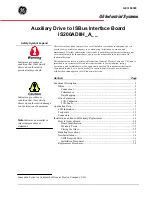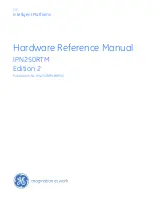
6
5
EX
EX
EX
-
-
-
44171
44171
44171
English
English
English
EX
EX
EX
-
-
-
44171
44171
44171
English
English
English
1
Die EX-44171 ist eine PCI-Express Multiport I/O Karte mit 1 seriellem FIFO 16C95x
Port und 1 parallelem Port für den Anschluss von High-Speed seriellen RS-232 und
parallelen Peripherie Geräten (z.B. Terminal, Modem, Plotter usw.). Der serielle PCI-
Express Bus unterstützt dabei optimal die Leistung des schnellen 16C95x Chipset mit
128byte FIFO Cache. Die EX-44171 gewährleistet so eine sichere Datenübertragung
und exzellente Performance von bis zu 921KBaud/s für jedes angeschlossene Gerät!
Sie unterstützt alle PCI-Express Slots von x1 bis x16. Es ist nicht möglich die I/O Ad-
ressen und Interrupts manuell einzustellen, da die Einstellungen der Karte vom System
(BIOS) und beim installieren des Betriebssystems automatisch vorgenommen werden.
BESCHREIBUNG & TECHNISCHE DATEN
AUFBAU
DRIVER INSTALLATION
S1: 9 Pin Stecker
Seriell Anschluss
P1: 25 Pin Buchse
Parallel Anschluss
Bedienungsanleitung
Bedienungsanleitung
Vers. 1.4 / 19.07.13
CHANGE PORT NUMBER
If you like to change the port number for example COM3 to COM5, open the >Device
Manager< click at >COM3<, >Settings< and then >Advance<. There you can change
between COM3 till COM256. The same applies also to change the LPT port.
Windows Server 200x
After starting Windows it recognizes a new “PCI Controller“ and opens the hardware
assistant. Please choose manual installation and put the driver CD into your CD-Rom
drive. Now enter the Path "D:\IO\OXFORD2\" and then the directory of your operating
system for Server 2000: “2000“, for Server 2003: “XP32“ or “XP64“, for Server 2008:
„Vista32“ or „Vista64“ and for Server 2008 R2: „Win7_8_32bit“ or „Win7_8_64bit“
into the box for the Path/Source and click at >next/continue<. Now Windows searches
for the drivers in the specified directory. Follow the hardware assistant and finish the
installation. If Windows recognizes other new devices repeat the above described
steps.
Attention! Restart your PC in any case after installing the drivers.
CHECK THE INSTALLED DRIVER
Click at Start<>Run< then enter “compmgmt.msc“ and click at >OK<. In the windows
that opens select >Device Manager<. Under „Ports (COM and LPT)“ you should find
a new „PCI Port“ as sample (COM3) & (LPT3). If you see this or similar entries the
card is installed correctly.
CHANGE PORT NUMBER
If you like to change the port number for example COM3 to COM5, open the >Device
Manager< click at >COM3<, >Settings< and then >Advance<. There you can change
between COM3 till COM256. The same applies also to change the LPT port.
LINUX
The drivers are located in the following folder on our driver CD:
"D:\IO\OXFORD2\LINUX"
Because each individual distribution and kernel version of Linux is different, sadly we
cant provide a installation instruction. Please refer to the installation manual for stan-
dard I/O ports from your Linux version! In some newer versions of Linux the card will
even be installed automatically after starting Linux.
J6: Anschluss für
Strom vom
PC Netzteil
JP2: Jumper für die Stromquelle
(Netzteil oder PCI-Express Bus)
JP3: Power auf 9 Pin
Stecker Ein/Aus
J1: Interner Serieller
Anschluss
Kompatibilität:
PCI-Express x1 bis x16
Betriebssysteme:
Windows 2000/ XP/ Vista/ 7/ 8/ Server 200x/ Linux
Anschlüsse:
1x 9 Pin D-Sub Seriell Stecker, 1x 25 Pin D-Sub Parallel Buchse
Lieferumfang:
EX-44171, Treiber CD, Anleitung
Zertifikate:
CE
CE
CE
CE
/ FCC / RoHS / WEEE DE97424562 / WHQL
JUMPER EINSTELLUNG & ANSCHLÜSSE
DIS
= Am Pin 9 liegt das Standard Signal RI (Ring Indicator)
(Werkseinstellung)
PWR
= Am Pin 9 kann jetzt eine Spannung von DC5V oder DC12V
eingestellt werden
Die Einstellung der Spannung nehmen Sie mit dem JP2 vor. Dies sollte
aber bei Standard Anwendungen nicht verstellt werden.
JP2:
Wenn Sie den Jumper JP3 für auf PWR gesetzt haben, können Sie mit
dem Jumper JP2 den Spannungswert einstellen. Es gibt 3 verschiedene
Spannungsquellen.
(Nur in Verbindung mit JP3 auf PWR!!!)
AUX 5V = 5Volt vom PC-Netzteil
AUX 12V = 12Volt vom PC-Netzteil
PCI 12V = 12Volt vom Mainboard (STANDARD)
AUX5V
AUX12V
PCI12V
J6:
1 +5V
2 GND
3 GND
4 +12V
Für AUX Einstellung (JP2) muss J6 mit PC Netzteil verbunden
werden! Sonst wird die Karte nicht mit Strom versorgt.
JP3:
DIS PWR
S1
JUMPER SETTING & CONNECTORS
If you are ready with the jumper settings, please proceed with the following installation
instructions. Because there are large differences between PC’s, we can give you only a
general installation guide. Please refer to your computer’s reference manual whenever
in doubt.
1. Turn off the power to your computer and any other connected peripherals.
2. Remove the mounting screws located at the rear and/ or sides panels of your Com-
puter and gently slide the cover off.
3. Locate an available expansion slot and remove its covers from the rear panel of your
computer. Make sure it is the right expansion slot for the card (see card description)
4. Align the card with the expansion slot, and then gently but firmly, insert the card.
Make sure the card is seated and oriented correctly. Never insert the card by force!
5. Then connect the card with a screw to the rear panel of the computer case.
6. Gently replace your computer’s cover and the mounting screws.
HARDWARE INSTALLATION
DRIVER INSTALLATION
Windows 2000/ XP/ Vista/ 7/ 8
After starting Windows it recognizes a new “PCI Controller“ and opens the hardware
assistant. Please choose manual installation and put the driver CD into your CD-ROM
drive. Now enter the Path "D:\IO\OXFORD2\" and then the directory of your operating
system into the box for the Path/Source and click at >next/continue<. Now Windows
searches for the drivers in the specified directory. Follow the hardware assistant and
finish the installation. If Windows recognizes other new devices repeat the above de-
scribed steps.
Attention! Restart your PC in any case after installing the drivers.
CHECK THE INSTALLED DRIVER
Click at Start<>Run< then enter “compmgmt.msc“ and click at >OK<. In the windows
that opens select >Device Manager<. Under „Ports (COM and LPT)“ you should find
a new „PCI Port“ as sample (COM3) & (LPT3). If you see this or similar entries the
card is installed correctly.
DB9M:
Pin
Signal
Pin
Signal
Pin
Signal
1
CDC
4
DTR
7
RTS
2
RXD
5
GROUND
8
CTS
3
TXD
6
DSR
9
RI
Serial 9 Pin D-SUB connector
Pin
Signal
Pin
Signal
Pin
Signal
1
STROBE
10
ACKNOWLEDGE
19
GROUND
2
DATA 0
11
BUSY
20
GROUND
3
DATA 1
12
PAPER EMPTY
21
GROUND
4
DATA 2
13
SELECT
22
GROUND
5
DATA 3
14
AUTO FEED
23
GROUND
6
DATA 4
15
ERROR
24
GROUND
7
DATA 5
16
INIT
25
GROUND
8
DATA 6
17
SELECT INPUT
9
DATA 7
18
GROUND
Parallel 25 Pin D-SUB connector
DB 25F:



















